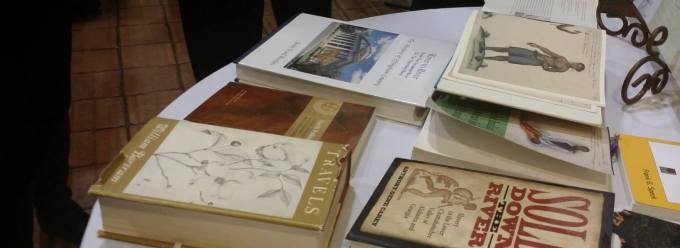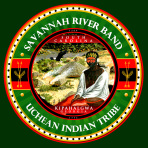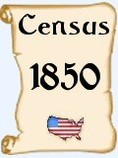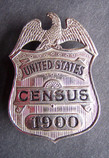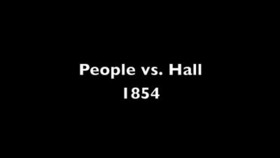FiveCivilizedTribesOfIndianTerritory7184[...]
Adobe Acrobat document [13.1 MB]
This was the first census where there was an attempt to collect information about every member of every household, including women, children, and slaves. Prior to 1850, census records had recorded only the name of the head of the household and broad statistical accounting of other household members (three children under age five, one woman between the age of 35 and 40, etc.). It was also the first census to ask about place of birth
The United States Census of 1850 was the seventh census of the United States. Conducted by the Census Office on June 1, 1850, it determined the resident population of the United States to be 23,191,876 — an increase of 35.9 percent over the 17,069,453 persons enumerated during the 1840 Census. The total population included 3,204,313 slaves.
The question concerning whether or not the individual was taxed provides the researcher with some clues to some other potential records. If the Indian either (1) was "living among white people as an individual, and as such subject to taxation," or (2) was "living with his or her tribe but has received an allotment of land, and thereby has acquired citizenship," then the answer in column 35 was to be recorded as "Yes." In the second case above, column 37 should also have "Yes" recorded in it. If the individual was living on the reservation and has a "Yes" in column 37, there should be an allotment record for that individual somewhere among the agency records for that reservation
When the United State Census Bureau collected information for the 1900 federal census, instructions were sent to the census takers to record information about Indians, "both those on reservations and those living in family groups outside of reservations. Special forms headed "Indian Population" were provided for this purpose.
The census takers were instructed to make an enumeration of Indians living on reservations on the Indian Population forms. If an Indian had intermarried with a white or Negro and that person was living with the Indian family, they were also to be recorded on the Indian Population form. But if an Indian individual was living outside of a reservation with a white or Negro family, that person was to be listed on the general population schedule with the rest of the family. The same instructions were also given for Indians living off the reservation.
Indian Population schedules were divided into two parts. The top half of the page was identical to the general population schedule, but contained only twenty lines, instead of the usual fifty. The bottom half of the page contains "Special Inquiries Relating to Indians" for those listed on the top half of the page. These inquiries included any other name the person may have been using at the time of the census (usually their Indian name), the tribe of the person listed as well as that of the person's father and mother, degree of white blood, whether or not the person was living in polygamy, whether or not they were "taxed," and the type of dwelling in which they were living.
Census enumerators were instructed to record occupations as on general schedules, except if the Indian was wholly dependent on the government, they were to write "Ration Indian" in the occupation column. If they were partly self-supporting or a minor receiving rations, special instructions were also given.
The Supplemental American Indian questionnaire was back, but in abbreviated form. It featured a question asking if the person was of full or mixed American Indian ancestry
The Famous Census of 1930.
The biggest change in this year’s census was in racial
classification. Enumerators were instructed to no longer use the "Mulatto" classification. Instead, they were given special instructions for reporting the race of interracial persons. A person with
both white and black ancestry (termed "blood") was to be recorded as "Negro," no matter thefraction of that lineage (the
"one-drop rule"). A person of mixed Black and American Indian ancestry was also to be recorded as "Neg" (for "Negro") unless he was considered to be "predominantly" American Indian and accepted as
such within the community. A person with both White and American Indian ancestry was to be recorded as an Indian, unless his American Indian ancestry was small, and he was accepted as White within
the community. In all situations in which a person had White and some other racial ancestry, he was to be reported as that other race. Persons who had minority interracial ancestry were to be
reported as the race of their father.
For the first and only time, "Mexican" was listed as a race. Enumerators were instructed that all persons born in Mexico, or whose parents were born in Mexico, should be
listed as Mexicans, and not under any other racial category. But, in prior censuses and in 1940, enumerators were instructed to list Mexican Americans as white.
Although many are aware that Harriet Beecher Stowe’s Uncle Tom’s Cabin, heightened tensions between the North and the South, some historians argue that Hinton R. Helper’s The Impending Crisis of the South: How to Meet It played a more significant role in starting the American
Civil War. According to historian George M. Fredrickson, it can be argued convincingly that Helper’s 1857 publication was “the most important single book, in terms of its political impact, that has
ever been published in the United States.” The Republican Party used it as a campaign document in the 1860 election and incorporated its message within its platform.
The Impending Crisis called for the abolition of slavery and the modernization of the South. Helper argued that slavery was the biggest obstacle to Southern economic growth. The peculiar
institution, he claimed, made the South’s population poor, ignorant, and superstitious, and he encouraged nonslaveholding whites to look out for their interests. (Helper was the only Southern
intellectual to conceptualize nonslaveholders as a distinct class.)
Slave ownership made the elite downplay the importance and respectability of manual labor. Nonslaveholding whites were only one small step above the slave, Helper pointed out. Slaveowners had duped
nonslaveholding whites into believing that the peculiar institution benefited them. In a century or two after slavery’s abolition, Helper predicted that the South would emerge as one of the greatest,
cosmopolitan civilizations “that ha[d] ever lived.” “Whence their ancestors may come, whether from Europe, from Asia, from Africa, from Oceania, from North or South America, or from the islands of
the sea, or whatever honorable vocation they may now be engaged in, matters nothing at all.”
(The People v. Hall, Oct. 1, 1854, as cited in Forbes, 1993, p.65).
hword “Black” may include all
Negroes, but the term “Negro” does not include all
Black persons...We are of the
opinion that the words “White”, “Negro”, “Mulatto”, and
“Black person”, whenever they occur
in our constitution...must be taken in their generic
sense...that the words “Black
person”, in the 14th section must be taken as contra
distinguished from White, and
necessarily includes all races other than the Caucasian
| THE PEOPLE, RESPONDENT, v. GEORGE W. HALL, APPELLANT. Supreme Court of the State of California, 1854. |
